Key takeaways
- Ethical dilemmas in education often involve balancing competing values, such as fairness and compassion, necessitating reflection and dialogue to navigate them effectively.
- Critical thinking and respect for diverse perspectives are essential principles in philosophy education, fostering growth and deeper understanding in ethical decision-making.
- Personal values serve as a guiding compass, shaping decisions and the educational environment, and may sometimes conflict with institutional policies.
- Reflective practices and transparent communication enhance ethical practices in the classroom, transforming challenges into opportunities for learning and connection.
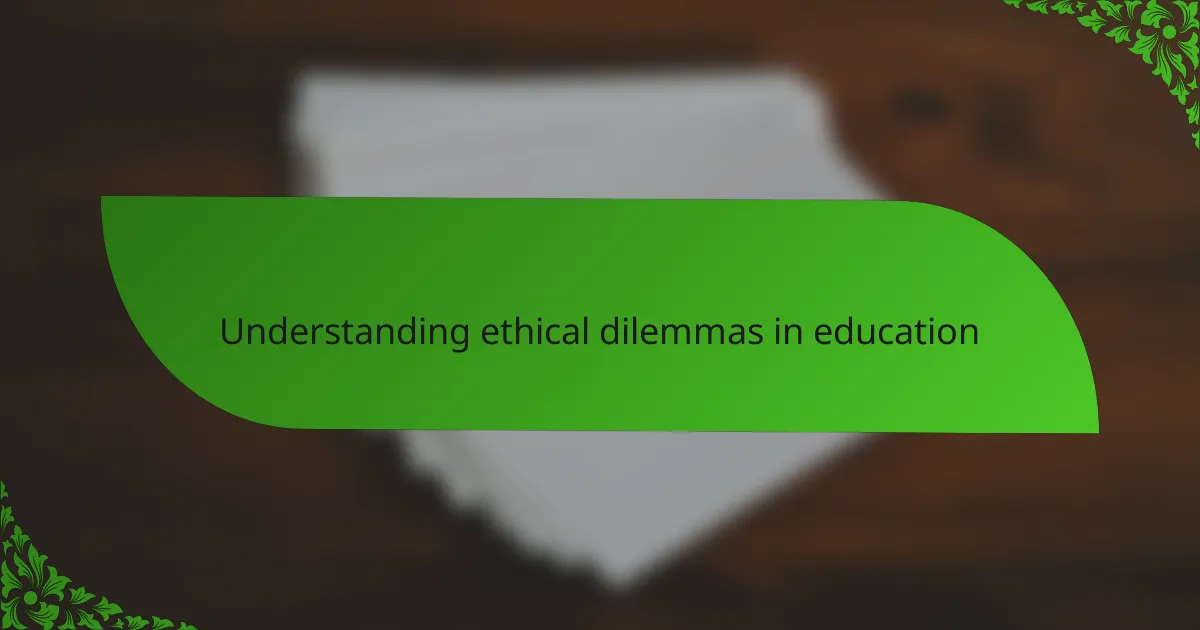
Understanding ethical dilemmas in education
Ethical dilemmas in education often arise when competing values clash, like fairness versus compassion. I’ve faced moments where the rules seemed rigid, but human needs demanded flexibility—those situations always made me pause and reconsider what “right” truly means. Have you ever wondered how to balance honesty with kindness when both pull you in different directions?
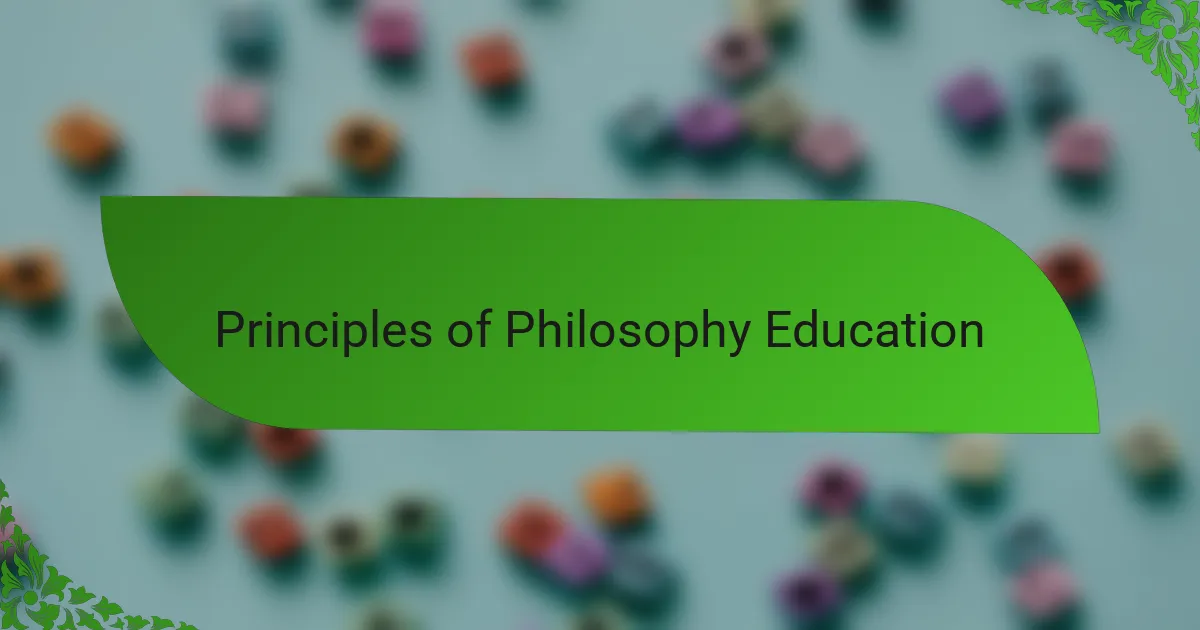
Principles of philosophy education
Philosophy education rests on a foundation of critical thinking, encouraging us to question assumptions rather than accept them at face value. I’ve found that when I approach ethical dilemmas this way, it opens up possibilities instead of locking me into rigid answers. Don’t you think that kind of open inquiry is what makes philosophy so uniquely powerful in education?
Another principle I hold close is the commitment to dialogue. Engaging with diverse viewpoints doesn’t just broaden understanding; it challenges me to refine my own beliefs. Sometimes, those conversations feel uncomfortable, but that discomfort is often where growth starts—would you agree?
Lastly, I believe philosophy education demands a respect for intellectual humility. Recognizing the limits of what I know pushes me to listen more and judge less, especially in complex ethical situations. Have you noticed how this attitude can transform conflicts from battles into opportunities for learning?
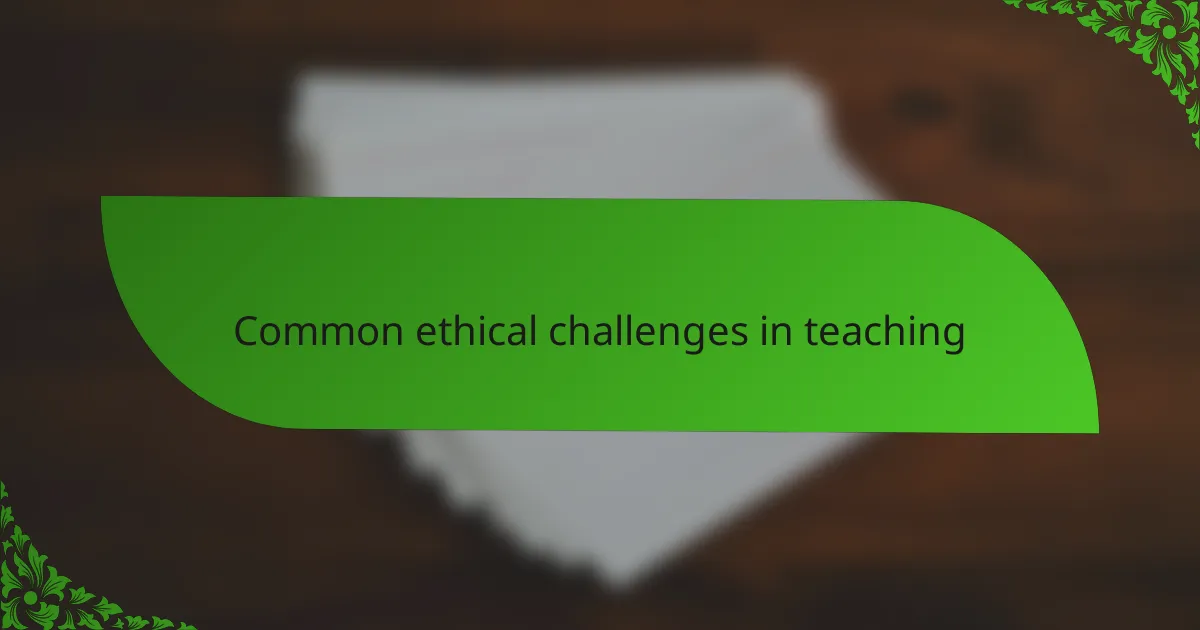
Common ethical challenges in teaching
One challenge I often encounter is maintaining fairness when students come from vastly different backgrounds and needs. It’s tough because treating everyone exactly the same doesn’t always feel just, especially when some students face obstacles I can barely imagine. Have you ever struggled with deciding when to bend the rules and when to stand firm for fairness?
Another common dilemma revolves around grading and assessment. I’ve found myself questioning how to evaluate creativity and effort without letting personal biases sneak in. It’s a fine line, and sometimes I worry if my judgments truly reflect the student’s potential or just my own preferences.
Dealing with confidentiality also weighs heavily on me. When a student shares something sensitive, I want to respect their trust but also fulfill my responsibility to act if their wellbeing is at risk. Navigating that balance often leaves me feeling conflicted and wondering: when is silence more harmful than speaking up?

Strategies for ethical decision making
When faced with ethical decisions, I lean heavily on a process of reflection that helps me sort through competing values. Asking myself questions like, “What outcome honors the dignity of everyone involved?” often clarifies a path forward. Have you noticed how slowing down to think can sometimes reveal solutions you hadn’t initially considered?
Another approach I’ve found invaluable is seeking counsel from trusted colleagues or mentors. Their perspectives often highlight blind spots I didn’t see, turning what felt like a solitary burden into a shared challenge. Isn’t it reassuring to know you’re not alone when ethical questions get complicated?
Lastly, I try to anchor my decisions in core ethical principles such as fairness, respect, and responsibility. Of course, applying these in real situations isn’t always straightforward, and sometimes emotions run high. I wonder, how do you balance sticking to principles while remaining sensitive to the unique nuances of each individual case?
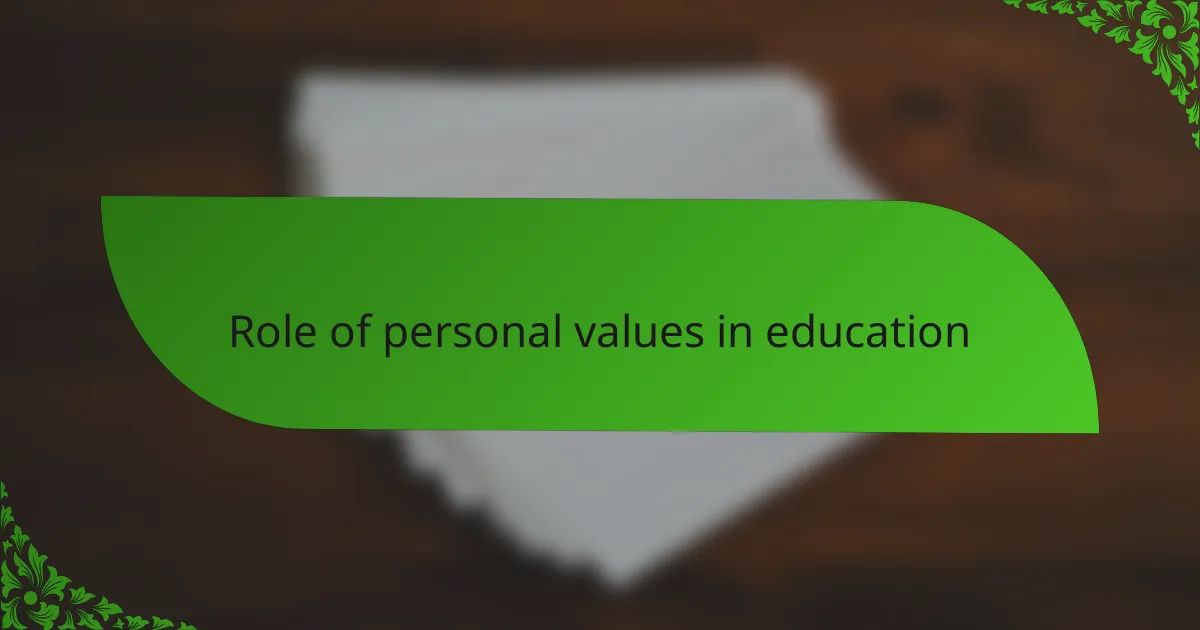
Role of personal values in education
My personal values act like a compass when navigating the often murky waters of education. I’ve noticed that when my core beliefs about respect and integrity face pressure, leaning into those values helps me make decisions that feel authentic, even if they’re tough. Have you ever felt that inner tug to stay true to what you believe, even when external circumstances challenge you?
Sometimes, my values create tension with institutional policies or peers’ expectations, and that’s where the real ethical wrestling begins. I recall a time when my commitment to honesty clashed with a school’s desire to present a flawless image, leaving me torn between transparency and loyalty. How do you reconcile your personal convictions when they seem at odds with the system around you?
Ultimately, I believe personal values don’t just guide choices—they shape the educational environment itself. When educators openly embody their values, it sets a tone that fosters trust and genuine connection with students. Isn’t that what education should be about at its heart?
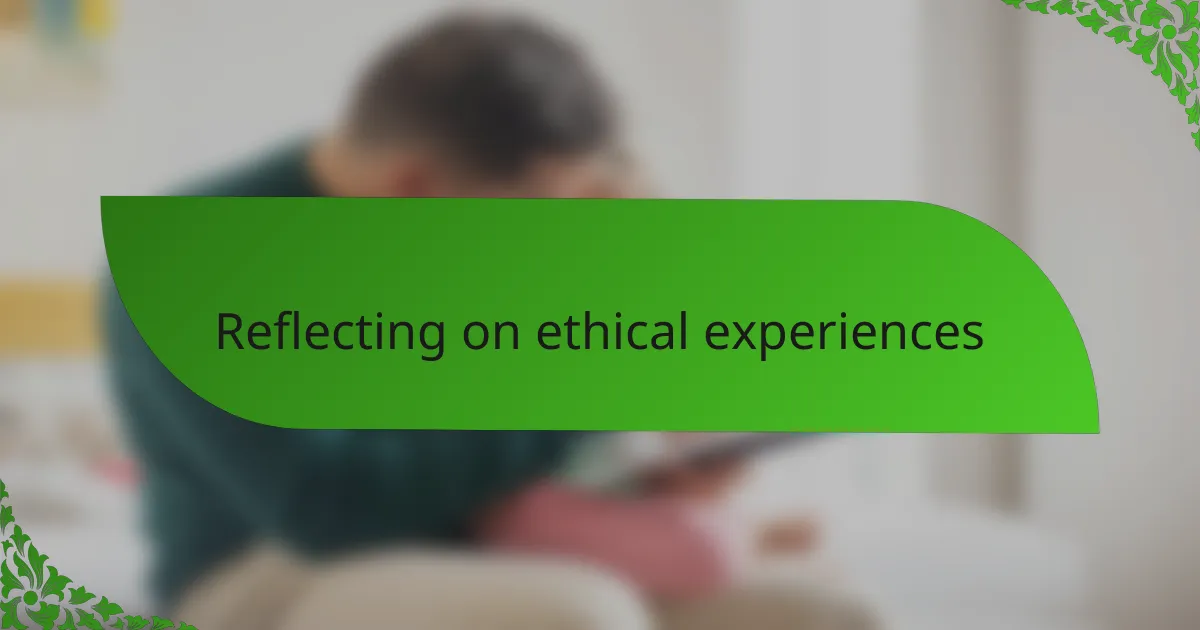
Reflecting on ethical experiences
Reflection has been my anchor when ethical uncertainties swirl around me. After difficult moments, I often sit quietly and replay the situation, asking myself what feelings surfaced and whether my actions aligned with my deepest principles. Have you ever found that simply taking that reflective pause helps you see the dilemma in a new light?
Sometimes, reflection reveals uncomfortable truths about my biases or blind spots. I remember a time I thought I was acting fairly, only to realize later that I hadn’t fully considered a student’s unique circumstances. That realization stung, but it pushed me to grow and be more mindful moving forward. Can acknowledging our missteps become a catalyst for better ethical choices?
I’ve also noticed that sharing reflections with trusted peers transforms solitary struggles into shared learning. Discussing challenging experiences not only eases the emotional weight but also exposes me to perspectives I hadn’t considered. Isn’t it surprising how an honest conversation can turn complex ethical problems into opportunities for connection and clarity?
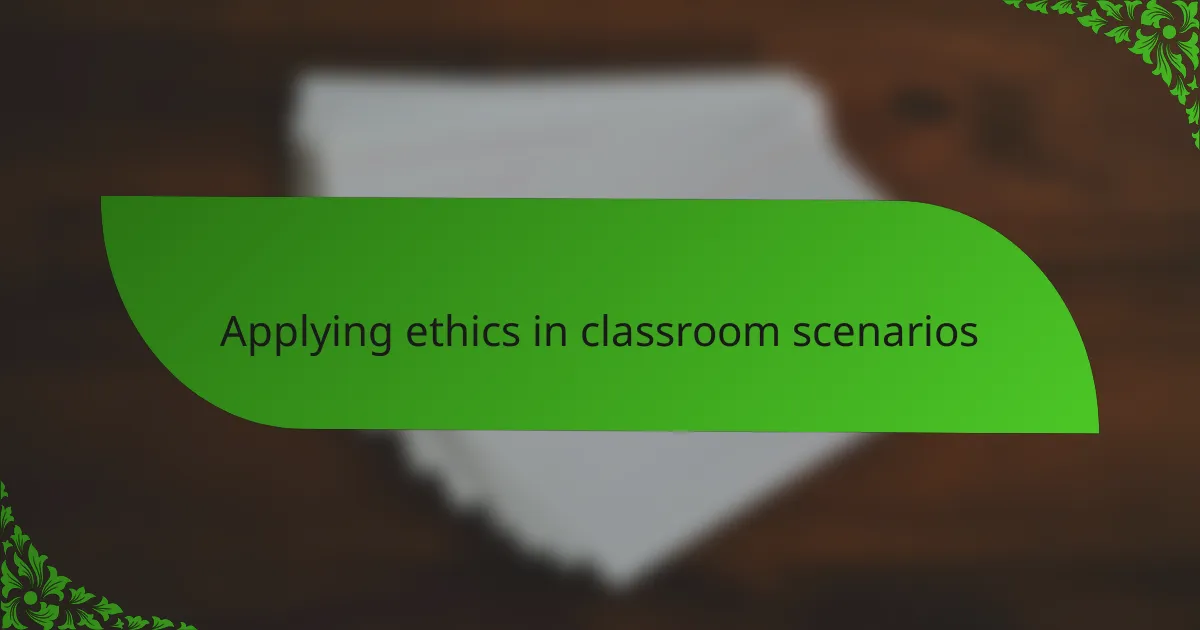
Applying ethics in classroom scenarios
Applying ethics in classroom scenarios often means navigating moments where rules and empathy seem at odds. For example, I once had to decide whether to enforce a late assignment penalty strictly or consider a student’s difficult home situation. That tension made me reflect deeply on what fairness really entails—is it equal treatment or equitable support tailored to individual needs?
At times, applying ethics requires real-time judgment calls. During group work, I noticed one student repeatedly dominating discussions, overshadowing quieter peers. Instead of reprimanding harshly, I chose to foster a dialogue about respect and inclusion, which shifted the group dynamic more effectively. Have you ever found that gently guiding students toward ethical behavior can create lasting impact without rigid enforcement?
I’ve also learned that transparent communication is key in ethical teaching. When I explain my reasoning behind decisions—whether grading choices or behavior management—it builds trust and clarity. Students respond better when they sense their voices are heard, even if they don’t always agree. Doesn’t that feel like a small but powerful act of respect that shapes a positive learning environment?